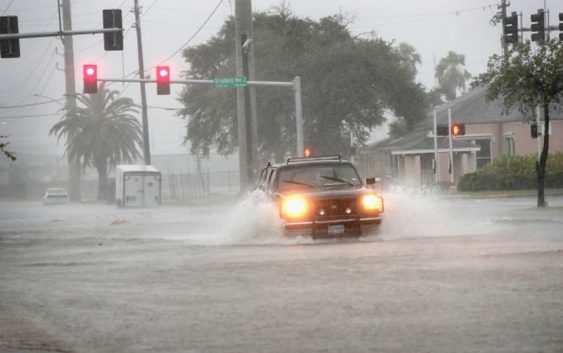- Rock Hill storm damage costs are 'somewhere around $5 million.' That number doesn't include damage to personal property
- Rock Hill storm damage costs are 'somewhere around $5 million.' That number doesn't include damage to personal property
- ‘Somewhere around $5 million’ | Rock Hill officials see major storm damage costs
- The deadliest tornadoes to ever hit Austin
- Whiteville resident recalls events from Tuesday nights tornado
Don't panic: Steps to take if your car sustains flood damage

-
Flash flood warnings have been issued as Tropical Storm Imelda works its way into the Houston-area.
It is anticipated that some areas will receive 3-6 inches of rain by Wednesday morning with continuing rainfall through Wednesday night.
>>>See the signs that a car might have been flooded in the past… less
Flash flood warnings have been issued as Tropical Storm Imelda works its way into the Houston-area.
It is anticipated that some areas will receive 3-6 inches of rain by Wednesday morning with continuing
Photo: 2017 Getty Images
Flash flood warnings have been issued as Tropical Storm Imelda works its way into the Houston-area.
It is anticipated that some areas will receive 3-6 inches of rain by Wednesday morning with continuing rainfall through Wednesday night.
>>>See the signs that a car might have been flooded in the past… less
Flash flood warnings have been issued as Tropical Storm Imelda works its way into the Houston-area.
It is anticipated that some areas will receive 3-6 inches of rain by Wednesday morning with continuing
Photo: 2017 Getty Images
Flash flood warnings have been issued as Tropical Storm Imelda works its way into the Houston-area.
It is anticipated that some areas will receive 3-6 inches of rain by Wednesday morning with continuing rainfall through Wednesday night.
In addition, cars may suffer damage as roads throughout the area are subject to flooding.
If your car is affected, there are some immediate steps you can take.
ON CHRON.COM: Tropical Storm Imelda targets Houston, Tropical Storm Warning issued for parts of Texas coast
Here is what the National Auto Dealers Association (NADA) recommends:
• Don’t start a flooded vehicle until a thorough inspection and cleaning is performed. Starting the car with water in the engine could cause more damage.
• Take immediate steps to dry the vehicle as much as possible to reduce the length of time vehicle components are exposed to water.
• Get the vehicle towed to higher ground if floodwaters are receding.
• Remove all moisture from the car if the interior got wet with a wet/dry vacuum. Remove seats if possible and use fans to quicken the drying process.
• Contact your insurance company or agent and promptly report the exposure of your vehicle to water or flood.
• Record the highest level of water exposure on a flooded vehicle.
• Contact a certified technician to arrange for an inspection and evaluation of all mechanical components, including the engine, transmission, axles, brake and fuel system for water contamination.
• Flush and replace all fluids, oils and lubricants, and replace all filters and gaskets for components exposed to water. While a vehicle may drive with fluids that have experienced water intrusion, extended internal exposure to water will increase the level of damage to the engine and other vehicle components.
• Many repair facilities recommend a thorough cleaning of brake parts and repacking of bearings, particularly for rear-drive vehicles. In front-wheel-drive vehicles, bearings are sealed.
• Some of today’s vehicles have padding and insulation that don’t easily release moisture. In this situation, it’s most effective to replace the materials to prevent the forming of mold or mildew that may contaminate the entire vehicle
Danny Hermosillo is the Digital News Editor for Chron.com | Read him on our breaking news site, Chron.com, and our subscriber site, HoustonChronicle.com | Follow him on Twitter at @Dannyherm1| Email him at Danny.Hermosillo@chron.com